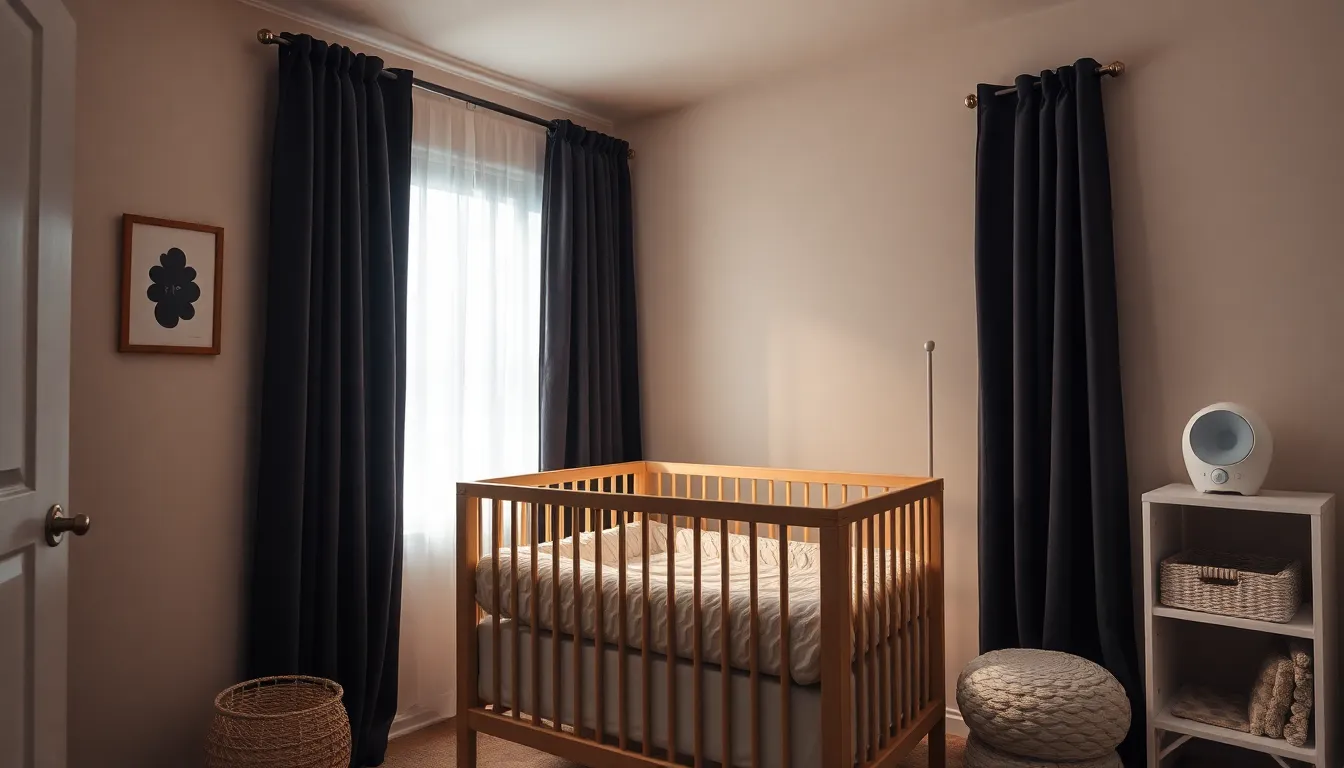Every parent knows the struggle of getting their little one to sleep. It often feels like an Olympic event where the stakes are high and the competition is fierce—who can outlast the other in the battle of wills? But don’t worry; there’s hope! With the right baby sleep tips, parents can transform their nighttime chaos into a peaceful slumber fest that even the Sandman would envy.
Table of Contents
ToggleUnderstanding Baby Sleep Patterns
Recognizing baby sleep patterns aids parents in establishing effective sleep routines. Babies sleep differently, and understanding these differences can ease nighttime challenges.
Newborn Sleep Cycles
Newborns typically experience short sleep cycles lasting about 50 to 60 minutes. During these cycles, they alternate between light sleep and deep sleep. Light sleep helps them adjust to their surroundings, while deep sleep promotes growth and development. Frequent awakenings occur in this stage since newborns sleep for only 14 to 17 hours each day. Parents can support their baby’s sleep by responding promptly to cries, ensuring a soothing sleep environment, and implementing consistent nap times.
Sleep Needs by Age
Sleep needs evolve as babies grow. Infants aged 1 to 4 months usually require 14 to 16 hours of sleep, often distributed throughout the day. At 4 to 12 months, sleep needs decrease to about 12 to 15 hours, with more consolidated nighttime sleep occurring. Toddlers aged 1 to 3 years need approximately 11 to 14 hours, including one nap. Tracking sleep patterns helps parents provide appropriate rest for their child’s developmental stage and fosters healthier sleep habits over time.
Creating a Sleep-Friendly Environment

Establishing a sleep-friendly environment plays a crucial role in helping babies rest well. A comfortable atmosphere fosters better sleep and contributes to the overall well-being of infants.
Importance of Room Temperature
Cool room temperatures promote restful sleep. Recommended temperatures range between 68°F and 72°F for optimal comfort. Warmth can lead to overheating, which increases the risk of sudden infant death syndrome (SIDS). Keeping the room at the right temperature helps babies fall asleep and stay asleep longer.
Light and Noise Considerations
Controlling light and noise levels significantly impacts baby sleep. Dim lighting, especially during bedtime, signals that it’s time to sleep. Block out external light using blackout curtains. Additionally, minimizing noise creates a more peaceful environment. Soft white noise machines can help mask disruptive sounds, promoting longer sleep durations for babies.
Establishing a Bedtime Routine
Establishing a bedtime routine is crucial for a baby’s sleep quality. A predictable routine signals bedtime and helps infants transition to sleep more easily.
Consistency is Key
Maintaining consistency in the bedtime routine promotes better sleep. Bedtime should occur at the same time each night, establishing a reliable cue for sleep. Parents can follow a similar sequence for activities leading up to sleep, such as bathing, reading, or singing soft lullabies. Repetition not only fosters security but also teaches babies what to expect. Babies thrive on routine, and predictable schedules help regulate their internal clocks.
Activities to Include Before Sleep
Incorporating specific activities before sleep enhances relaxation. A warm bath can soothe and calm, preparing babies for rest. Reading a short story creates a peaceful environment, encouraging bonding while signaling that it’s time to unwind. Gentle rocking or cuddling serves to comfort and help babies transition from playtime to sleep. Soft music or lullabies can further establish a calming atmosphere. Finally, dimming the lights signals that the day is ending, contributing to a serene setting conducive to sleep.
Soothing Techniques for Better Sleep
Parents can use various soothing techniques to promote better sleep for their babies. Two effective methods include swaddling and the use of white noise.
Swaddling and its Benefits
Swaddling wraps babies snugly in a soft blanket, mimicking the comforting environment of the womb. This technique reduces startle reflexes, which can disrupt sleep, enabling longer sleep periods. According to pediatric experts, swaddled infants sleep better and may fall asleep more quickly. As babies grow, parents can transition from swaddling to using lightweight sleep sacks. A safe swaddling practice prevents overheating, making it essential for a comfortable sleep experience.
The Role of White Noise
White noise creates a consistent auditory backdrop that can drown out sudden, disruptive sounds. Many babies find this steady sound soothing as it resembles the noises they heard in the womb. Research indicates that white noise machines may help babies fall asleep faster. Volume levels should stay safe, not exceeding 50 decibels to protect a baby’s hearing. Incorporating soft white noise can enhance a baby’s sleep environment, making bedtime feel less jarring and more reassuring.
Addressing Common Sleep Challenges
Babies often face sleep challenges that require understanding and patience. Parents can implement strategies to address these issues effectively.
Dealing with Night Wakings
Night wakings can frustrate parents, but they’re common. When babies wake at night, it’s important to respond calmly. Parents might try to soothe their baby without picking them up, providing comfort through gentle patting or speaking softly. Gradually, this helps babies learn to self-soothe and return to sleep. Keeping the room dim can signal that it’s still time for rest. Avoiding bright lights during these interactions can maintain a sleepy atmosphere.
Sleep Regression Periods
Sleep regression periods can disrupt established sleep patterns. Babies typically experience these regressions around four months, eight months, and 18 months. During these times, increased fussiness and frequent awakenings can occur. Acknowledging that regressions are temporary helps parents cope. Continuing with established bedtime routines can provide reassurance and consistency during these transitions. Staying patient and firm in routines promotes eventual return to normal sleep habits.
Implementing effective sleep strategies can transform a baby’s nighttime routine. By understanding their sleep needs and creating a conducive sleep environment, parents can foster healthier sleep habits. Establishing a consistent bedtime routine not only promotes relaxation but also helps babies develop a sense of security.
Soothing techniques like swaddling and white noise can further enhance sleep quality. Parents should remain patient during sleep regressions and night wakings, as these are normal phases in a child’s development. With dedication and the right approach, peaceful nights can become a reality for both parents and their little ones.



